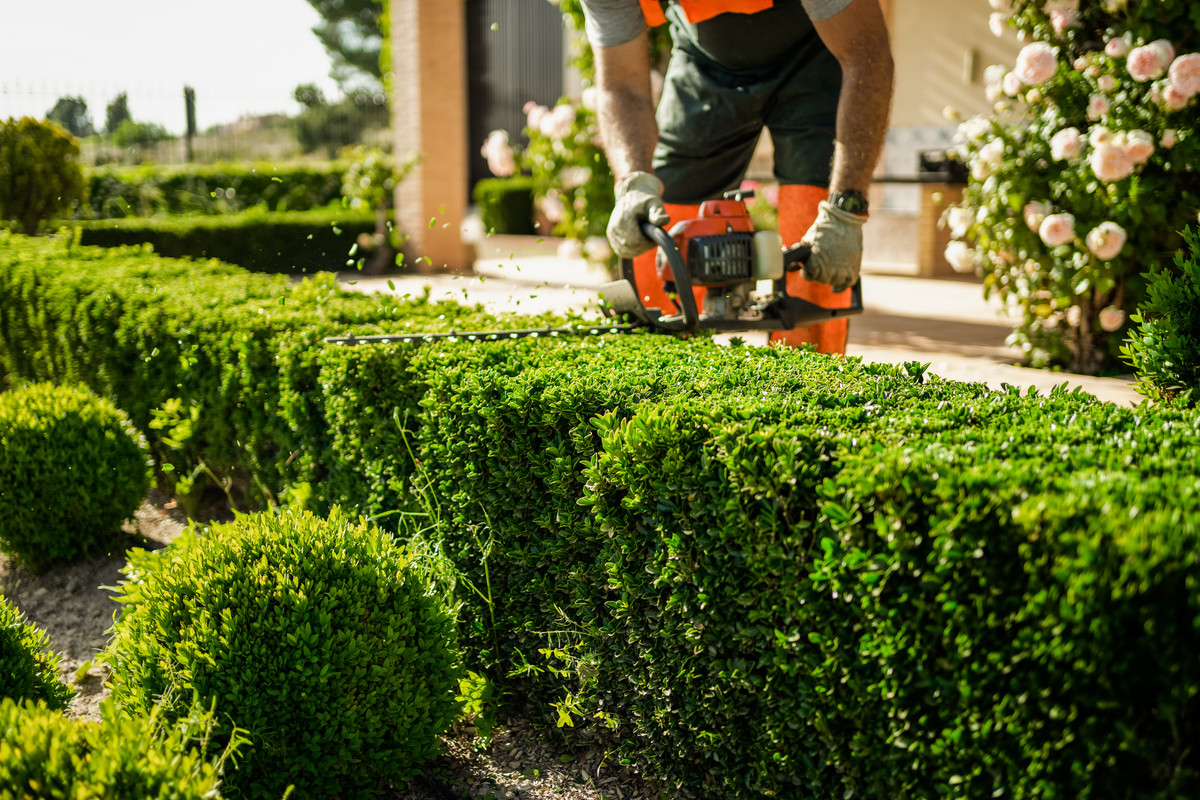Planning Landscaping
by siteadmin

Landscaping is an art form of altering the visible features of a piece of land. In most cases, this involves modifying the natural landscape to achieve a specific aesthetic goal. Landscaping professionals can help you with the planning process, and they can help you work with a landscape designer if needed. For more information, read on! Listed below are some basic steps to take when planning landscaping. They include: Identifying plants, Working with a landscape designer, and Estimating the cost.
Designing a landscape
When planning a landscape design, you'll want to pay special attention to the plants you choose. Trees, for example, need ample drainage, but they also need moisture to grow. Shrubs and other plants can add texture and dimension to your landscape. A key to creating a gorgeous design is diversity. Consider using native species of plants where possible, which often have low water requirements. Plants can also help reduce pests and disease and can enhance the exterior aesthetic of your home.
When you are planning a landscape design, you'll want to consider the five basic design principles. The principles of design can be broken down into five different categories such as form, color, and mass. Mass, form, and line help you organize space in your landscape, while color and texture add interest to your design. You can use each of these to guide your plant selections and the layout of your hardscape elements. This way, your landscape design will be unique and a reflection of your tastes and preferences.
Once you have a basic understanding of how plants and trees grow in your yard, you can start planning. Determine what kind of plants and flowers would thrive in your yard. Consider how much sunlight your yard will receive during the day. If you plan to entertain guests outside, then consider adding a large seating area. If you have kids, consider including a large outdoor area for play. Consider how the environment will affect you, as well as the appearance of your landscaping.
After determining the general look of your landscape, you should decide on the shape of your yard. Once you have decided on the overall theme of your landscape, it's time to decide which plants and hardscape materials will complement each other. Once you've selected your plants and hardscape materials, the next step is to choose where they will grow. Keeping in mind that acute angles are more difficult to install, it's important to select the right angles to connect areas.
Identifying plants
There are several methods for identifying plants that you can use when landscaping. Plants that produce fruit and vegetables are generally easier to identify than others. Try to choose plants that produce fruit or vegetables in the fall when they are in season. Using a program such as PlantSnap can help you identify plants by their fruit and vegetable content. These programs are useful if you want to learn more about plant species. They also offer plant pictures and descriptions.
Another way to identify plants is with an app that uses artificial intelligence to recognize plants. With this application, you simply input the photo of a plant, and it will tell you what it is. If the app identifies the plant correctly, it will also list similar plants. These visual similarities are a good sign that the plant you are looking at is the same species. The app will also provide you with more information about the plant, such as whether it is native to the US or an invasive species.
When photographing the plant, make sure to take a close-up of its flower. You can also hold the stem to determine its size. If the plant does not produce flowers, take a close-up of its leaves. Note its shape and position. Alternatively, take a far-reaching shot of the whole plant. Then, compare the photo with the photo of the flower. This way, you can determine what the plant is and how to care for it.
If you have a phone that can recognize the majority of plants, you can download a plant-identifying app to identify them. There are several popular apps out there that can help you. You can even track the growth of your flowering plants using the app. This app will help you identify plants in your garden and make it easier for you to care for them.
Working with a landscape designer
The process of working with a landscape designer begins with a consultation. The first step in the process is to discuss the scope of your project and any other concerns you may have. This meeting is meant to provide you with honest feedback. The landscape designer will then proceed with the design and move on to the final stages of the project. A series of meetings may be necessary, especially if the project is large. The aim of these meetings is to ensure the end result is what you are after.
A consultation with a landscape designer can make your life easier during major construction. The designer will help you make important decisions about the layout of the outdoor space. In addition, they will consider construction considerations when planning your new yard. For example, they will determine where to put your garage and walkways, as well as whether you'll need a pool or a garden bed. In addition, they will offer tips for protecting plants.
Before you choose a landscape designer, you must determine your budget. A landscape designer will likely be able to give you an estimate of the cost of the design based on the size of your property and the type of landscaping you want. Because landscapes are living, they change over time, so they may need to be modified after installation. If you can afford it, consider working with a landscape designer who also handles installation.
The benefits of working with a landscape designer are many. Unlike an employee, a freelance landscape designer will have greater freedom and flexibility. They can work as little or as much as they want and still produce high-quality designs. And you'll be able to work with a landscape designer who knows plants inside and out. This may help you to save money and enjoy the end result of a beautiful outdoor space.
Once you have selected a landscape designer, you should also consider hiring for an internship. Internships are a great way to gain experience and attract potential employers. Depending on your area, internships can be paid or unpaid, but most internships will offer credit toward your degree. If you're planning on working with an employer, make sure they offer internships and work in your local area. It's also a good idea to invest in an inbound marketing strategy in your area.
Cost of Landscaping
The cost of landscaping varies greatly depending on what you're looking for. Depending on your area, you can expect to pay anywhere from $4,000 to $20,317 for a professional installation and design. The specific cost of these features varies, but the basic cost is generally around $133 per month. The cost of landscape maintenance plans includes lawn mowing, weeding, leaf removal, and bush trimming. However, there are certain factors to keep in mind, such as your budget and the features you want.
The cost of landscaping can be greatly affected by the type of soil in your yard. The best plants for your yard may require soil enhancement, which can increase the overall cost of your project. If you want to add a lake, the cost can rise significantly. A landscaper might charge anywhere from $1,000 per acre to almost $1 million for a full lake renovation. Some landscape professionals charge around $100 per hour for their work, but this can be quite expensive if you want a professional designer to take on the project.
Adding a water feature to your landscaping project is another important consideration. Water fountains are inexpensive alternatives to swimming pools. The basic setup for a water fountain costs around $2,000 and can cost as much as $6,000. Besides saving water, a water fountain will help you create a relaxing and beautiful outdoor space. You can purchase an artificial or natural mulch and get the same benefits without the high price tag. You may also consider installing an irrigation system.
The cost of plants depends on the quality, size, and type. Professional landscaping companies purchase quality plants at wholesale nurseries. These plants are surprisingly cheap when compared to retail prices. A common 5g evergreen shrub will run you around $26, while a large 15-gallon tree could cost $158. Additional costs include the cost of soil and fertilizer, as well as the installation of new plants. Hardscaping can cost anywhere from $5 to $50 per square foot, depending on the materials used.
Categories: Landscaping
Tags: landscaping services, landscaping guide, landscape designs, landscaping approaches, landscaping techniques
Landscaping is an art form of altering the visible features of a piece of land. In most cases, this involves modifying the natural landscape to achieve a specific aesthetic goal. Landscaping professionals can help you with the planning process, and they can help you work with a landscape designer if needed. For more information, read…
Recent Posts
- Revolutionizing Floral Art with Inspired Seasonal Collections and Stunning Ceremony Settings
- Bathroom Remodel Rochester Sets New Standards in Bathroom Renovations
- Bathroom Remodel Rochester Sets New Standards in Bathroom Renovations
- Boston Roofing Co. Sets New Standards in Roofing Services in Boston
- Relief Recovery Center: A Comprehensive Approach to Addiction Recovery
